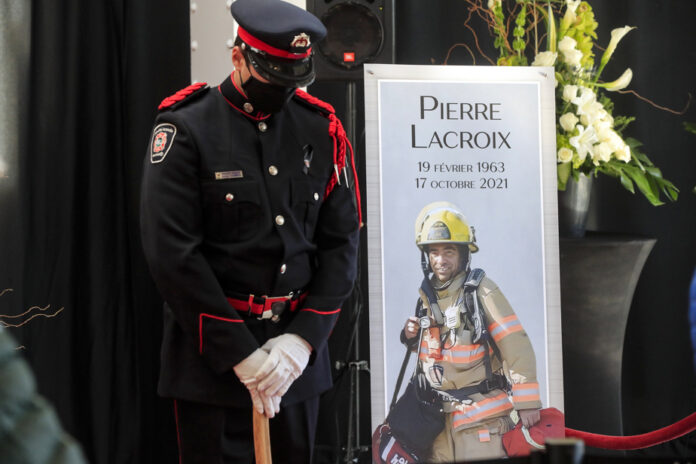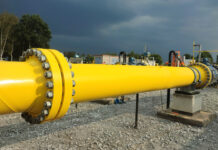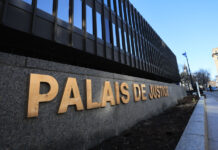Better training of firefighters for water rescues, requirements for boaters and more clarity in the line of command: coroner Géhane Kamel released her report on the death of firefighter Pierre Lacroix on Thursday.
He lost his life during an attempt to rescue two drifting boaters in the Lachine rapids in October 2021. His death had shocked Quebec.
“All witnesses described him as a careful, conscientious and unifying firefighter,” writes Me Kamel. This father of two children was a “committed man for whom the rescue mission was tattooed on his heart”.
In a 55-page report, the coroner traces the chilling chronology of this October 17.
The boaters left Saint-Louis Park, in Lachine, for a short trip. Their engine then overheated and stopped. They tried several times to make it work while drifting. At 7:05 p.m., as darkness set in, they dialed 911.
Boaters knew of the existence of the Lachine Rapids, “but none of them measured the deadly potential. This situation [in] itself is problematic and demonstrates that citizens are not on the lookout for the dangers of navigation on the river,” laments Me Kamel.
At 7:17 p.m., four firefighters from the Montreal Fire Department (SIM), including Pierre Lacroix, launched their boat, a Hammerhead 1864, and headed as quickly as possible towards the drifting boaters.
The coroner noted several shortcomings in the firefighters’ equipment (lack of signaling beacons, ineffective warning light, absence of waterproof portable VHF radio). Two boats should also have left together.
The towing attempt turned tragic. The Hammerhead finds itself in the hollow of a wave, the yachtsmen’s boat at the top of it. The two boats collide, water rushes into the Hammerhead, which capsizes.
Three firefighters find themselves under the hull, while a fourth is ejected and goes adrift. The body of Pierre Lacroix will be fished out the next morning, under the hull. Death by drowning.
“As of the evening of October 17, 2021, none of the firefighters had swift water training and the command post did not have officers qualified in water rescue. There was one victim, there could have been six”, denounces Me Kamel.
The establishment of an exclusion zone in the St. Lawrence River, where boaters could go at their own risk, had been recommended by a previous report from the CNESST. Me Kamel brings some nuances.
“We now know that firefighters will do everything humanly possible to save lives,” she wrote. Ultimately, the crew of the boat could decide on an intervention deemed urgent and, in this case, they must be able to deal with a possible capsizing or rescue. It is not enough to prohibit an area, the firefighters must be prepared for all eventualities. »
His recommendation is therefore to “review the danger zone of the SIM by ensuring that the firefighters can rescue shipwrecked people there in the event of an emergency”.
The coroner also addresses recommendations to all the authorities that were directly or indirectly involved in the rescue.
“That night was a mess,” testified Mr. Bélisle of the Canadian Coast Guard (CCG). “This evening illustrated the importance of reviewing the agreements between the partners in terms of the responsibilities of each, but also the implementation of simulations to test their rescue and coordination plans during major events”, notes Me Kamel .
At the Ministry of Public Security, she suggests establishing good practices for nautical rescues for the fire departments of the province.
Regarding the SIM, in addition to reviewing the training of firefighters, Me Kamel proposes to equip each boat with a service cell phone, and personal equipment with a GPS beacon.
The coroner also appealed to the Canadian Coast Guard about the Lachine Rapids signage. Finally, it urges Transport Canada to review the procedures for obtaining a boater’s competency card. This card, currently, is obtained through a three-hour online training, at a cost of $50.
Hammerhead boats had been blamed as being partly responsible for the tragedy. They have since been removed. A new fleet, equipped in particular with two engines and an automatic stabilization system, will be operational for the summer season of 2023, underlines Me Kamel. She recommends that the SIM equip itself with at least two personal watercraft to better be able to intervene in “risk areas”.


















